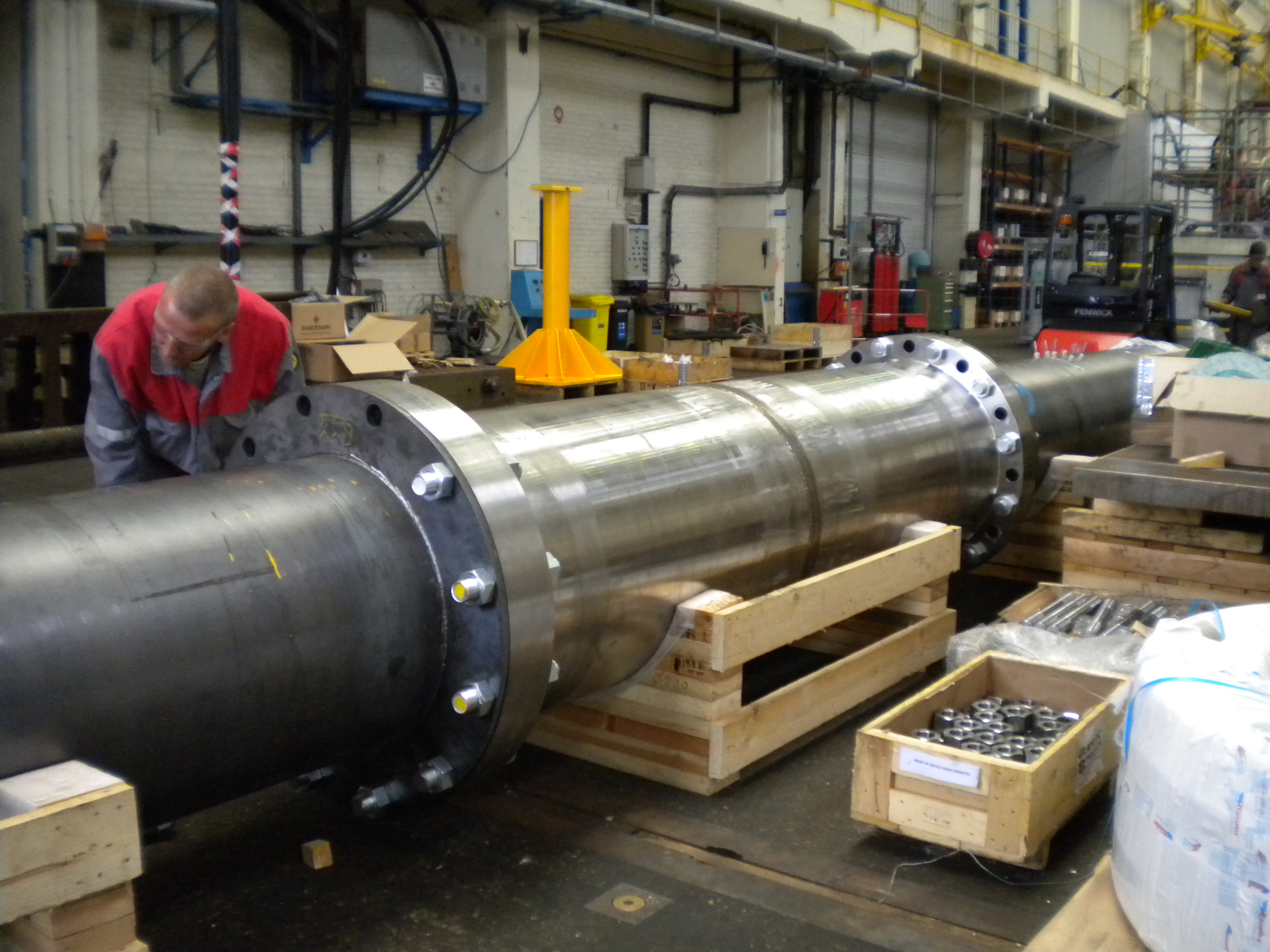March 2014, Vol. 241 No. 3
Projects
Dresser-Rand Performs Noise Test On Large Pipe Resonator

Dresser-Rand Group Inc. recently performed a noise test for what the company says is the largest pipe resonator array ever produced.
The test, performed on a 30-inch pipe, was to validate and confirm the estimated noise attenuation on a compressor operated by Statoil. This represents the first time Dresser-Rand developed and produced a pipe resonator array 30 inches in diameter – the largest ever produced.
The project involved two complete compression trains with DATUM® D18 centrifugal compressors operating on a platform in the North Sea, 40 miles west of Statoil’s Kollsnes gas processing plant. To reduce noise emissions from the compressor trains, Statoil asked Dresser-Rand to install all necessary components. This included a diffuser resonator array at the first and last stages of the compressor and a pipe resonator array installed on the inlet and discharge process piping.
“We can install an internal resonator array in the diffuser region or an external array on compressor flanges or into a client’s process piping,” said Scott Wisler, director, Centers of Technical Excellence at Dresser-Rand. “The initial choice was to use internal diffuser resonator arrays, but Statoil asked us to also install pipe resonator arrays on their 28- and 30-inch pipes.”
The actual test was conducted at the Dresser-Rand facility in Le Havre, France. The Le Havre facility includes a dedicated acoustic resource and state-of-the-art technology in acoustic analysis and testing capability. To verify the attenuation of sound by the array, sound pressure levels were produced by a loudspeaker and measured in ducts upstream and downstream of the array.
The measurements included a comparison of the sound level with a straight pipe spool piece and a pipe resonator array. Results showed that the pipe array could achieve over 10dB attenuation for the frequency range corresponding to the speed range of the compressor. Because the measure of sound level is a logarithmic function, a 10dB reduction corresponds to a 90% reduction in sound power.
Turbo compressors are, by nature, a loud noise source, typically 90dB or more, and the major noise source originates from the impeller aerodynamic interaction with stationary components. Historically, engineers addressed this compressor noise problem by treating the sound transmission path and applying devices such as sound enclosures and sound insulation. Today, the preferred technique is to attenuate, or reduce, the noise at its source.
“Once installed, improvements are immediate and dramatic, and the benefits in terms of reductions in noise and vibration damage will last for the life of the compressor,” Wisler said.
The patented Dresser-Rand sound attenuation technology can be applied to new or installed compressors, including compressors built by other manufacturers. This technology has been validated by extensive in-house study to be acoustically effective, and yet, have no measureable adverse effect on aerodynamic performance. The advanced design of these resonator arrays is effective in reducing associated vibration that can cause structural fatigue failures and damage piping and instrument connections.





Comments